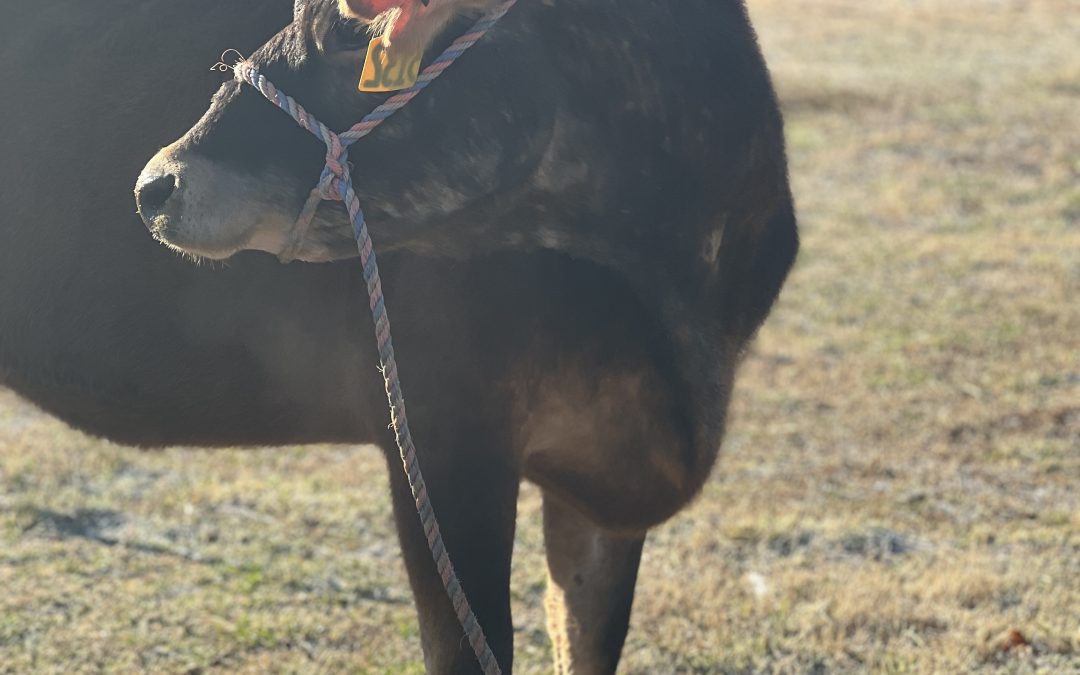This post may contain affiliate links, to learn more about them, check out our Disclosure.
Raising dairy cows can be fun, or a nightmare… and it all depends on the cow. We have had cows that came to us halter broke, and more than a few that have never even saw a halter, let alone had one on. I have also found that not all cows even need to be halter broke, some of our girls will follow you to the end of the world and back, without any coaxing. Learning how your cow reacts to difference situations is key to getting them halter broke, without stressing you, or your cow, out.
Step-by-Step Guide on How to Halter Break a Cow
1. Understanding Halter Breaking
Halter breaking is the process of training a cow to accept and respond to wearing a halter, which allows for easier handling and control.
2. Gathering Necessary Equipment
Before starting, gather the following equipment:
- Halter: Choose a well-fitted, sturdy halter appropriate for a cow’s size.
- Lead Rope: A strong, non-slip lead rope of sufficient length (usually around 10-12 feet).
- Secure Area: A quiet, enclosed area like a small pen or paddock for training.
3. Building Trust
Begin by spending time near the cow without attempting to halter it. This helps build trust and familiarity.
4. Introducing the Halter
- Approach Calmly: Approach the cow calmly and confidently.
- Let Them Sniff: Allow the cow to sniff and inspect the halter.
- Slow Introduction: Gently and slowly introduce the halter over the cow’s head. Be patient and reassuring throughout.
5. Positive Reinforcement
- Reward System: Use treats or verbal praise to reinforce positive behaviors, such as standing still or responding to gentle pressure on the halter.
- Consistency: Be consistent in your training sessions, keeping them short and frequent.
6. Leading Practice
- Start Slowly: Once the cow is comfortable with the halter, attach the lead rope.
- Practice Leading: Apply gentle pressure on the lead rope and coax the cow to move forward and stop.
- Gradual Progress: Increase the distance and duration of leading sessions gradually.
7. Handling Challenges
- Patience: Understand that each cow learns at its own pace. Be patient and avoid rushing the process.
- Gentleness: Always handle the cow gently to avoid stressing or frightening it.
8. Repetition and Reinforcement
- Regular Sessions: Schedule regular training sessions to reinforce halter breaking lessons.
- Repetition: Repeat steps as needed until the cow consistently responds to halter and lead commands.
9. Final Testing
- Field Test: Once confident in the cow’s response, test its training in different environments to ensure consistency.
10. Maintenance
- Ongoing Training: Continue reinforcing halter breaking skills periodically to maintain the cow’s responsiveness.
- Check Equipment: Regularly inspect the halter and lead rope for wear and tear.
By following these steps consistently and patiently, you can effectively halter break a cow, making handling and management much easier and safer. Remember, each cow is unique, so adjust your approach accordingly for best results.



